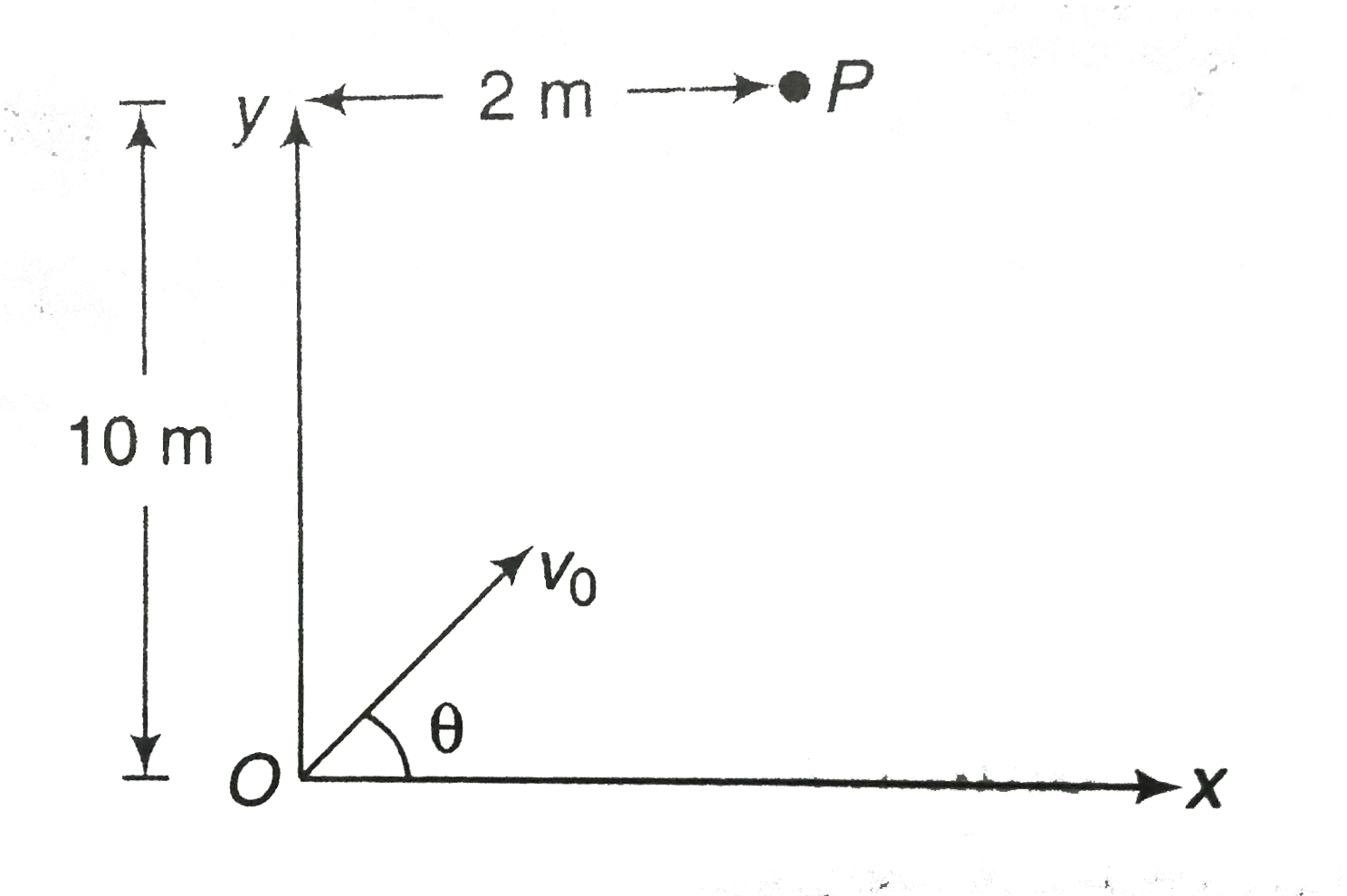A particle is dropped from the top a tower h metre high and at the same moment another particle is projected upward from the bottom. They meet the upper one has descended a distance h/n . Show that thevelocities of the two when they meet are in the ratio 2: (n−2) and that the initial velocity of the particle projected upis √(1/2)ngh.
The correct Answer is:2n−2
To solve the problem, we will analyze the motion of both particles step by step.
Step 1: Analyze the motion of the first particle (dropped from height h)
The first particle is dropped from a height h. The distance it descends when they meet is given as hn.
Using the equation of motion for free fall:
s=ut+12gt2
where s is the distance fallen, u is the initial velocity (which is 0 for a dropped object), g is the acceleration due to gravity, and t is the time of fall.
Substituting the known values:
hn=0+12gt2
This simplifies to:
hn=12gt2
From this, we can express t2:
t2=2hgn
Step 2: Calculate the velocity of the first particle when they meet
The velocity of the first particle when it has fallen a distance of hn can be calculated using:
v=u+gt
Since u=0:
v1=gt
Substituting t from the previous step:
v1=g√2hgn=√2gh
Step 3: Analyze the motion of the second particle (projected upwards)
Let the initial velocity of the second particle (projected upwards) be u. The distance it travels when they meet is:
h−hn=h(1−1n)=hn−1n
Using the equation of motion for the upward motion:
s=ut−12gt2
Substituting the known values:
hn−1n=ut−12gt2
Step 4: Substitute t2 into the equation for the second particle
From Step 1, we know:
t2=2hgn
Thus,
12gt2=12g(2hgn)=hn
Now substituting this back into the equation for the second particle:
hn−1n=ut−hn
Rearranging gives:
hn−1n+hn=ut
hnn=ut
h=ut
Thus,
u=ht
Step 5: Substitute t to find u
Substituting t=√2hgn:
u=h√2hgn=√hgn2
Step 6: Find the velocities ratio
Now, we have:
- v1=√2gh
- v2=u−gt=√hgn2−g√2hgn
Calculating v2:
v2=√hgn2−√2gh=√2gh(n−2n)
Step 7: Ratio of velocities
The ratio of the velocities v1:v2 becomes:
v1v2=√2gh√2gh(n−2n)=nn−2
Thus, the ratio of the velocities is:
v1:v2=2:(n−2)
Step 8: Conclusion for initial velocity
The initial velocity of the particle projected upwards is:
u=√12n√gh
s=ut+12gt2
where s is the distance fallen, u is the initial velocity (which is 0 for a dropped object), g is the acceleration due to gravity, and t is the time of fall.
hn=0+12gt2
This simplifies to:
hn=12gt2
From this, we can express t2:
t2=2hgn
v=u+gt
Since u=0:
v1=gt
Substituting t from the previous step:
v1=g√2hgn=√2gh
h−hn=h(1−1n)=hn−1n
s=ut−12gt2
Substituting the known values:
hn−1n=ut−12gt2
t2=2hgn
Thus,
12gt2=12g(2hgn)=hn
hn−1n=ut−hn
Rearranging gives:
hn−1n+hn=ut
hnn=ut
h=ut
Thus,
u=ht
u=h√2hgn=√hgn2
- v1=√2gh
- v2=u−gt=√hgn2−g√2hgn
v2=√hgn2−√2gh=√2gh(n−2n)
v1v2=√2gh√2gh(n−2n)=nn−2
Thus, the ratio of the velocities is:
v1:v2=2:(n−2)
u=√12n√gh
Topper's Solved these Questions
- KINEMATICS-1BOOK - CENGAGE PHYSICS ENGLISHCHAPTER - KINEMATICS-1EXERCISE - Single Correct
52 Videos
- KINEMATICS-1BOOK - CENGAGE PHYSICS ENGLISHCHAPTER - KINEMATICS-1EXERCISE - Graphical Concept
17 Videos
- KINEMATICS-1BOOK - CENGAGE PHYSICS ENGLISHCHAPTER - KINEMATICS-1EXERCISE - Exercise 4.4
16 Videos
- GRAVITATIONBOOK - CENGAGE PHYSICS ENGLISHCHAPTER - GRAVITATIONEXERCISE - INTEGER_TYPE
1 Videos
- KINEMATICS-2BOOK - CENGAGE PHYSICS ENGLISHCHAPTER - KINEMATICS-2EXERCISE - Exercise Integer
9 Videos
Similar Questions
A stone is dropped from a tower of height 200 m and at the same time another stone is projected vertically up at 50 m/s. The height at which they meet ? [g=10m/s2]
View SolutionA stone is allowed to fall from the top of a tower 100m high and at the same time another stone is projected vertically upwards from the ground with a velocity of 25m/s. Calculate when and where the two stones will meet.
View SolutionA stone is dropped from a height 300 m and at the same time another stone is projected vertically upwards with a velocity of 100m/sec. Find when and where the two stones meet.
View SolutionA stone is allowed to fall from the top of a tower 300 m height and at the same time another stone is projected vertically up from the ground with a velocity 100ms−1 . Find when and where the two stones meet ?
View SolutionA stone is dropped from the top of a tower of height h=60m. Simultaneously another stone is projected vertically upwards from the foot of the tower. They meet at a height 2h3 from the ground level. The initial velocity of the stone projected upwards is (g=10ms−2)
View SolutionA particle is dropped from point P at time t = 0. At the same time another particle is thrown from point O as shown in the figure and it collides with the particle P. Acceleration due to gravity is along the negative y-axis. If the two particles collide 2 s after they start, find the initial velocity v0 of the particle which was projected from O. Point O is not necessarily on ground.

View SolutionA ball is dropped from the top of a building 100 m high. At the same instant another ball is thrown upwards with a velocity of 40ms−1 from the bottom of the building. The two balls will meet after.
View SolutionA ball is dropped from the top of a building 100 m high. At the same instant another ball is thrown upwards with a velocity of 40ms−1 from the bottom of the building. The two balls will meet after.
View SolutionA particle is dropped from the top of a high building 360 m. The distance travelled by the particle in ninth second is (g=10m/s2)
View SolutionA particle is projected vertically up and another is let fall to meet at the same instant. If they have velocities equal in magnitude when they meet, the distance travelled by them are in the ratio of
View Solution
